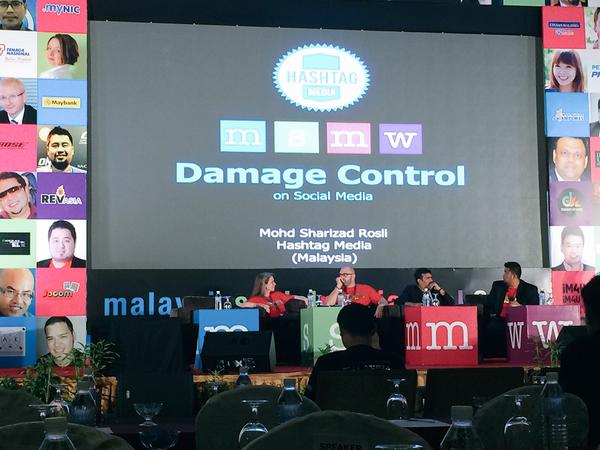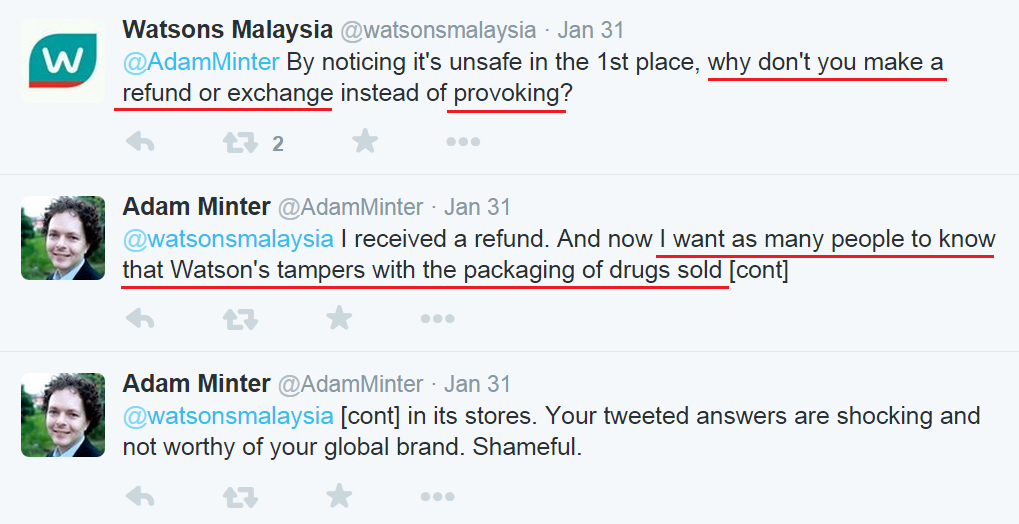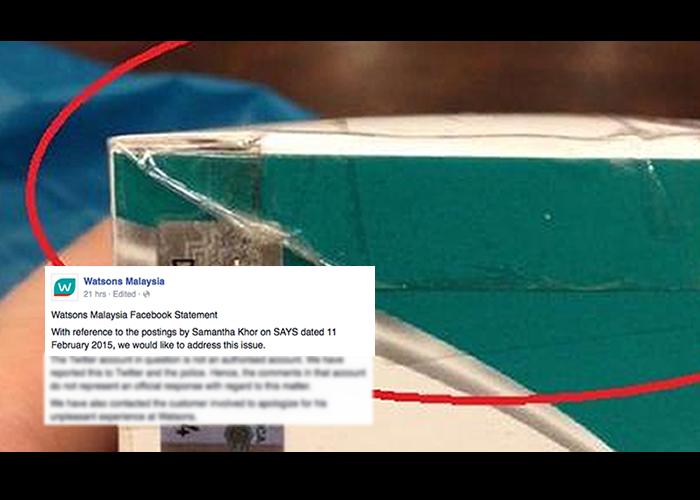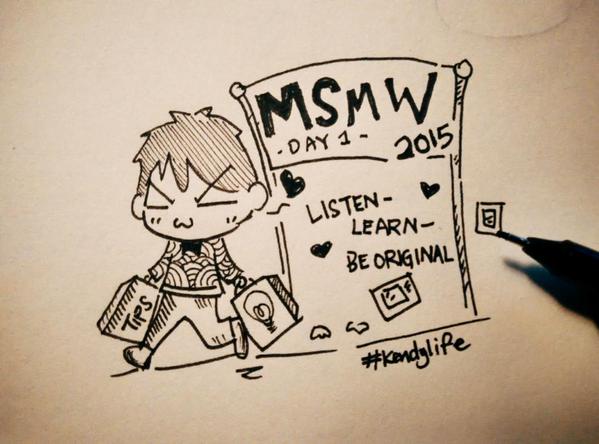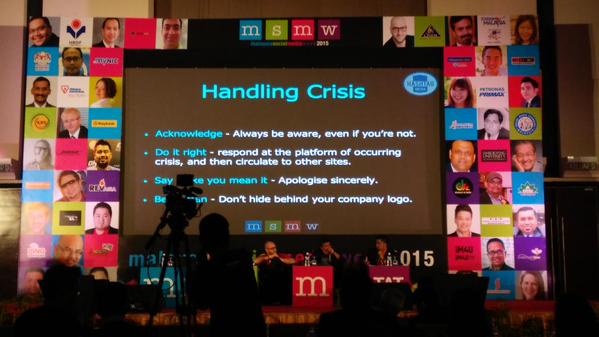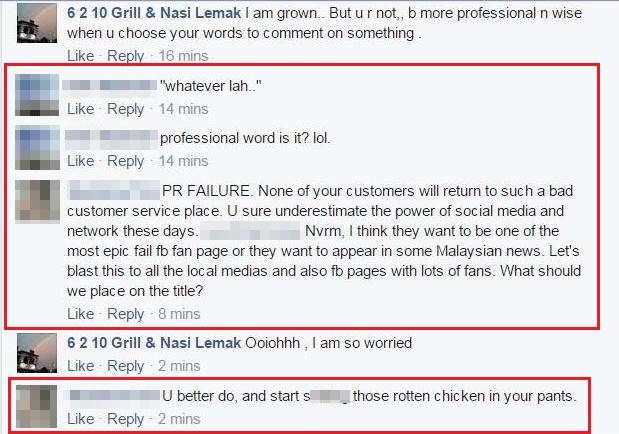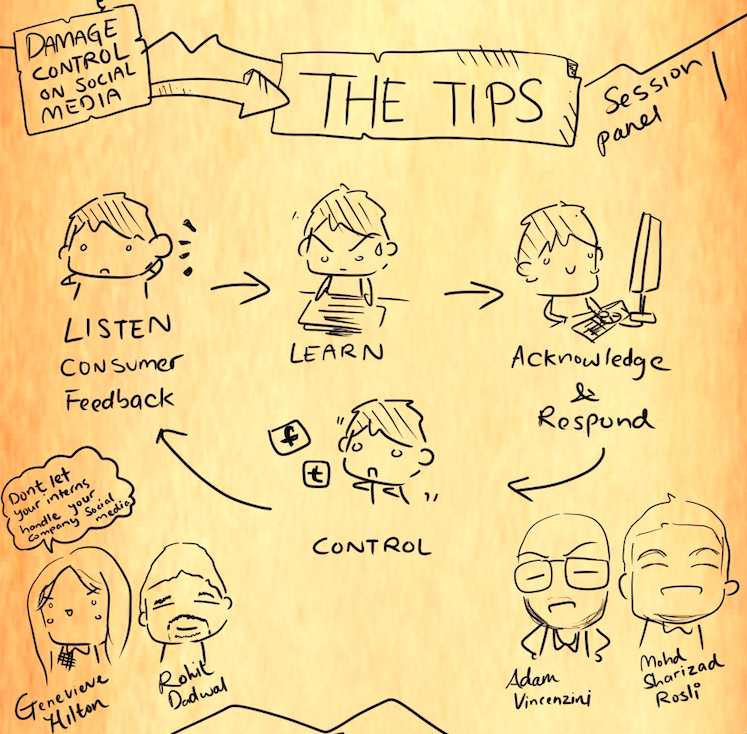10 Things Local Brands Should Know About Social Media Damage Control
We learned some tips from communication and media gurus on how to successfully manage a social media crisis from this year's Malaysia Social Media Week summit.
Here's what we learned during a panel session in Malaysia Social Media Week, about the appropriate actions to take when dealing with damage control on social media:
On the panel session was:
- Mohd Sharizad Rusli, Social Media Strategist & Co-Founder, Hashtag Media
- Rohit Dadwal, Managing Director, Mobile Marketing Association
- Adam Vincenzini, Founder and Managing Partner, Kamber
- Genevieve Hilton, Head of External Comm. Corp. Affairs APAC, BASF
1. The first step to managing a social media crisis is to acknowledge that there is crisis
What's the first rule of Fight Club? Yup, that's right. We don't talk about Fight Club!
However, in the case of damage control on social media, it's the complete opposite. What's the first rule of a social media crisis? We acknowledge that there is a crisis! Remember that.
2. Respond swiftly and address the issue even if it's a false report. Better it come from you than from someone else.
Fight Social Media Fire With Social Media Water
Once you have some information, you should respond first in the venue where the crisis first broke. If the crisis initiated on Facebook, respond first on Facebook. Then circle around and respond in other venue that have picked up on the crisis.
Acknowledgement and swift response could have lessened the blow on Watsons' social media mishap when a Bloomberg writer's complaints about Panadol with broken seals was met with disregard on Twitter and later went viral
It started when Bloomberg writer, Adam Minter bought a box of Panadol with a broken safety seal back in February. He brought it to the attention of an unverified Watsons Malaysia's Twitter account. The account replied to his concerns with rudeness and disregard. Instead of addressing the issue immediately, Watsons Malaysia ignored Minter's multiple attempts in reaching out to them.
Their official statement addressing the authenticity of the unverified Twitter account and broken safety seals came out only a few days later, after the incident had gone viral on the Internet. By then, however, it was already too late.
3. A rule of thumb when it comes to responding, the information must be: the same, true, fast, and simple
Essentials of crisis management: before you do 2.0 or 3.0 you have to get 1.0 correct #MSMW2015 @jennychu2
— Andrew Chow (@IdeasAndrew) April 22, 2015
Genevieve Hilton, Head of External Communication for BASF, shared some of her wisdom with the attendees. According to her, the information being sent out to all target groups have to be consistent and contain the same information throughout the different distribution channels. They have to come out fast but at the same time be accurate. They also must be simple enough that the target groups are able to understand and grasp the information at hand.
4. Exercise control! Address the issue in a controlled medium so that you can dominate the conversation and monitor the development of the crisis.
Social media crisis control: Own the communication and drive it. Don't let the media take over the conversation. @rohitdadwal #msmw2015
— Mei Mei Chu (@meixchu) April 22, 2015
5. Listen to consumer feedback. Always be aware of what others are saying and publishing.
PJ eatery, 6 2 10 Grill & Nasi Lemak could have taken a cue or two about being apologetic and sincere. When they received a complaint, not only did they not apologise, instead they provoked the customers, thus making their bad situation even worse
When a customer complained about being served rotten chicken by the restaurant, the staff refused to acknowledge nor apologise for the mistake. Enraged, said customer took to Facebook to warn others about the establishment's nonchalance for the complaint and potential health hazard for serving rotten food, which caused an uproar.
The person handling the restaurant's Facebook account however retorted concerned customers with snarky remarks and arrogance. This only made matters worse, while the rude replies from the restaurant continued on.
The issue drew more attention from Facebook users and showed no sign of stopping. This forced the restaurant to finally release an official statement but commenters doubted the sincerity of the apology, citing the prolonged response time and failure to address the main problem - serving rotten food to a customer - at hand.
When INTI faced a blunder in March after posting a sexist photo on their Facebook page, netizens weren't so quick to forgive even after they had apologised as they came off as insincere and nonchalant about their mistake
In commemoration of International Women's Day this year, INTI International University & Colleges shared a photo on their Facebook page which could only be described as demeaning rather than celebratory of women. Netizens were quick to point out the problem with the offensive photo and many called for an apology and have the photo taken down.
They responded each angry comment with the same reply. Not only did their response came off as insincere, they also did not admit their wrongdoing. As they received more negative backlash, they finally deleted the photo and posted an official statement. But the damage was already done and their attempt at redeeming themselves did not go over too well with the commenters.
7. Learn from your mistakes and figure out where the crisis started, how it spread, etc.
After the crisis subsides, and you’ve dried the tears off your laptop, reconstruct and deconstruct the crisis.
convinceandconvert.com8. It's never too early to start damage control
Manage potential social media crisis b4 it bcoms a crisis. Nvr too early. Address the issue, regularly interact w opinion leaders. #msmw2015
— Mei Mei Chu (@meixchu) April 22, 2015
9. When it comes to social media engagement and management, don't leave it to the interns!
Dont let your interns handle your company social media #MSMW2015 #denaihatinetwork @msmw_2015 pic.twitter.com/VxkT6SQLWh
— Mohd Zarin (@mohd_zarin) April 22, 2015
The SAYS team however believes that interns come with even more powers than you think. Train them well and your brightest interns could offer the best ideas and help you run them.
10. The biggest takeaway from the panel session: Be human
Summary of social media crisis control: Be human. #MSMW2015 #socialmedia
— Darian Goh (@dariangoh) April 22, 2015
Each speaker reiterated on the importance of adding value and the human element when it comes to dealing with damage control. As Sharizad Rosli, co-founder of Hashtag Media said, don't hide behind your company logo!
The man who blew us away by stepping up during AirAsia's biggest crisis was none other than Tony Fernandes himself. Empathetic and calm, he did not hide behind the company, but instead put himself front and centre of the crisis, which won him praises from critics everywhere.
